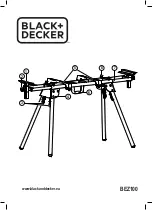
Rev. 1.50
166
����st ��� �01�
Rev. 1.50
16�
����st ��� �01�
HT66F0175/HT66F0185
A/D Flash MCU with EEPROM
HT66F0175/HT66F0185
A/D Flash MCU with EEPROM
3
rd
byte has been completely shifted in, otherwise the 3
rd
byte will be discarded and an overrun error
OERR will be subsequently indicated. The steps to initiate a data transfer can be summarized as
follows:
• Make the correct selection of the BNO, PRT, PREN and STOPS bits to define the required word
length, parity type and number of stop bits.
• Setup the BRG register to select the desired baud rate.
• Set the RXEN bit to ensure that the UART receiver is enabled and the RX pin is used as a UART
receiver pin.
At this point the receiver will be enabled which will begin to look for a start bit.
When a character is received, the following sequence of events will occur:
• The RXIF bit in the USR register will be set then RXR register has data available, at least one
more character can be read.
• When the contents of the shift register have been transferred to the RXR register and if the RIE
bit is set, then an interrupt will be generated.
• If during reception, a frame error, noise error, parity error or an overrun error has been detected,
then the error flags can be set.
The RXIF bit can be cleared using the following software sequence:
1. A USR register access
2. A RXR register read execution
Receiving Break
Any break character received by the UART will be managed as a framing error. The receiver will
count and expect a certain number of bit times as specified by the values programmed into the BNO
and STOPS bits. If the break is much longer than 13 bit times, the reception will be considered as
complete after the number of bit times specified by BNO and STOPS. The RXIF bit is set, FERR
is set, zeros are loaded into the receive data register, interrupts are generated if appropriate and the
RIDLE bit is set. If a long break signal has been detected and the receiver has received a start bit,
the data bits and the invalid stop bit, which sets the FERR flag, the receiver must wait for a valid
stop bit before looking for the next start bit. The receiver will not make the assumption that the
break condition on the line is the next start bit. A break is regarded as a character that contains only
zeros with the FERR flag set. The break character will be loaded into the buffer and no further data
will be received until stop bits are received. It should be noted that the RIDLE read only flag will go
high when the stop bits have not yet been received. The reception of a break character on the UART
registers will result in the following:
• The framing error flag, FERR, will be set.
• The receive data register, RXR, will be cleared.
• The OERR, NF, PERR, RIDLE or RXIF flags will possibly be set.
Idle Status
When the receiver is reading data, which means it will be in between the detection of a start bit and
the reading of a stop bit, the receiver status flag in the USR register, otherwise known as the RIDLE
flag, will have a zero value. In between the reception of a stop bit and the detection of the next start
bit, the RIDLE flag will have a high value, which indicates the receiver is in an idle condition.
















































